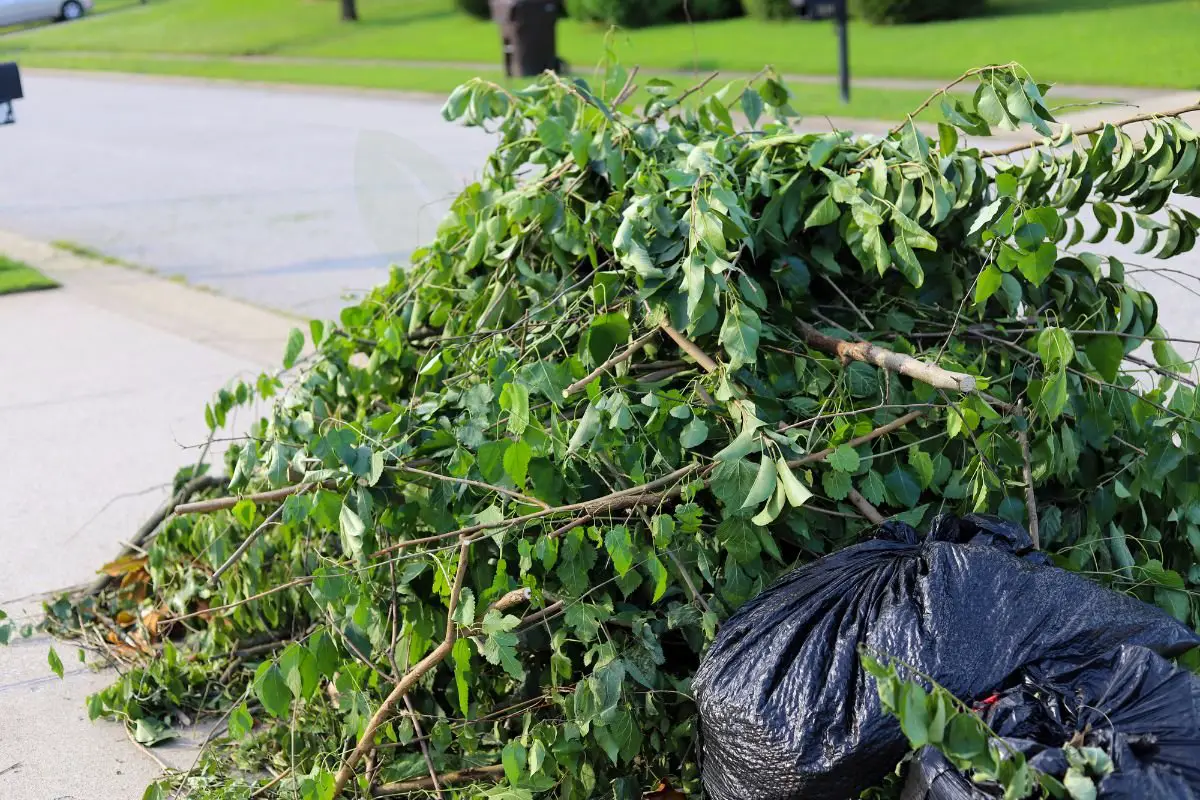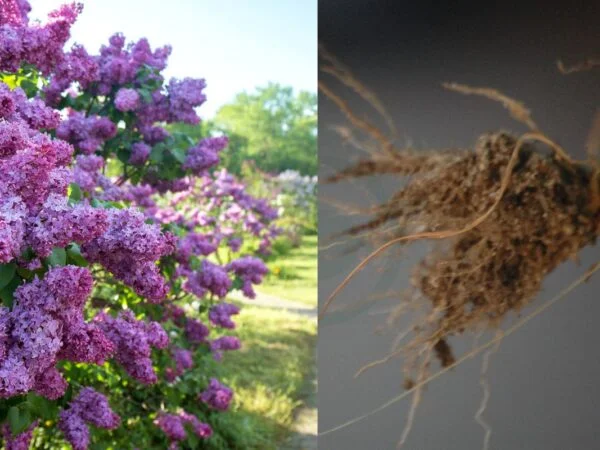Removing a lilac bush can be a challenging task, but with the right guidance, it can be done efficiently. Whether you are looking to clear space for new landscaping or need to get rid of a dying plant, knowing how to remove a lilac bush is essential.
To successfully remove a lilac bush, you will need to gather the necessary tools, prepare the area, and carefully extract the roots. This step-by-step guide will walk you through the process, ensuring that you can tackle this project with confidence.
If you're ready to learn the best techniques for removing a lilac bush and want expert tips on ensuring a smooth removal process, keep reading for valuable insights and advice.
Key Takeaways
- Prepare Before Removing: Clear the area around the lilac bush and gather necessary tools before starting the removal process.
- Choose the Right Method: Decide between hand-pulling, using a shovel/spade, or seeking professional assistance based on the size and location of the lilac bush.
- Consider Chemical Solutions: If manual methods are not feasible, explore chemical options for effective removal.
- Regular Maintenance is Key: Prevent overgrowth by regularly trimming and monitoring the lilac bush's growth.
- DIY vs. Professional Help: Evaluate your expertise and the complexity of the removal task to determine whether to tackle it yourself or hire a professional.
- Prioritize Safety: Whether removing the lilac bush yourself or with help, prioritize safety measures to avoid injuries during the process.
Reasons for Removal
Overgrowth Concerns
Lilac bushes can quickly spread and crowd out other plants in a garden, signaling overgrowth. This unchecked growth poses risks such as overshadowing and depriving sunlight from surrounding vegetation. The health of other plants may suffer due to the dominance of overgrown lilac bushes.
Identifying signs of overgrowth is crucial to maintaining a balanced garden ecosystem. The rapid spread and crowding behavior of lilac bushes can lead to an imbalance in the garden's flora. Understanding these risks helps in taking timely action to prevent further damage.
Root Destruction
The root systems of lilac bushes can cause devastating consequences for surrounding vegetation if left unaddressed during removal. It is vital to tackle root destruction to ensure the health and vitality of the garden post-removal. By addressing root destruction, regrowth and the spread of lilac bushes can be effectively prevented.
Exploring the impact of root systems on neighboring plants sheds light on the importance of thorough removal processes. Understanding how roots can infiltrate and disrupt the growth of other vegetation highlights the necessity of comprehensive removal techniques.
Lifespan Issues
Recognizing the limited lifespan of a lilac bush is essential for effective garden maintenance. The lifespan directly impacts the plant's growth patterns, potentially leading to overgrowth and susceptibility to diseases. Addressing these lifespan issues proactively is crucial for maintaining overall garden health.
Understanding the correlation between a lilac bush's lifespan and its impact on garden dynamics is key to preventing potential issues. By acknowledging how lifespan influences growth behavior, gardeners can implement strategies to mitigate overgrowth risks effectively.
Preparation Tips
Preventing Overgrowth
To prevent overgrowth of a lilac bush, regular pruning is essential. Trim back any dead or diseased branches to promote healthy growth. Ensure proper spacing between plants to prevent overcrowding and competition for resources.
Regularly monitor the soil moisture levels around the lilac bush. Avoid overwatering as it can lead to root rot, but ensure the plant receives adequate hydration, especially during dry spells. Mulching around the base helps retain moisture and regulate temperature.
Assessing DIY vs Pro
- When considering DIY vs professional removal, weigh the pros and cons carefully.
- DIY removal allows for cost savings and a sense of accomplishment but requires time, effort, and physical labor.
- Professional services offer expertise, efficiency, and convenience but come at a higher cost.
Evaluate your skills and resources before deciding on a removal method. Consider factors like your experience with gardening tools, physical capabilities, available time, and willingness to learn new techniques.
Making an informed decision involves understanding the specific requirements of removing a lilac bush. While DIY may be suitable for smaller bushes with straightforward removal needs, larger or more complex bushes may benefit from professional assistance.
Removal Methods
Hand Pulling
Master the technique of hand-pulling young lilac bushes with shallow roots. This method involves gripping the base firmly and pulling upwards steadily. Understand the steps involved in safely and effectively hand-pulling a lilac bush, ensuring you extract the entire root system. Hand pulling is ideal for small lilac bushes that have not yet developed deep root structures.
Shovel Use
Explore the process of using a shovel or spade to remove a lilac bush. Start by digging around the base of the bush to expose the roots. Understand how to prepare both the bush and soil for shovel removal, ensuring minimal damage to surrounding plants. Discover the steps involved in extracting the entire root ball using a shovel, ensuring you get rid of all root fragments.
Truck or Tractor
Learn how to utilize a truck or tractor for removing older and larger lilac bushes with extensive root systems. Before proceeding, assess the stability of the bush and surrounding area to avoid accidents. Understand the precautions and techniques required for using heavy machinery safely during lilac bush removal. Discover the benefits of using a truck or tractor, such as efficiency in uprooting large bushes without excessive physical strain.
Chemical Intervention
Explore the option of using chemicals to aid in lilac bush removal, especially for stubborn varieties with deep roots. Different types of chemicals are available for this purpose, each with specific application instructions. Understand how these chemicals work to weaken roots and make extraction easier. Learn about safety measures when handling these substances, including protective gear and proper disposal methods.
Hand-Pulling Technique
Assessing Size
Determining the size of the lilac bush is essential to select the right removal method. Understanding how the bush's size impacts removal complexity is crucial. Assessing size is key for successful lilac bush removal.
Loosening Soil
- Master the technique of loosening soil around a lilac bush before removal.
- Understand the importance of softening soil to ease extraction.
- Learn how to prepare the ground effectively for a smooth removal experience.
Pulling Strategy
Develop a strategic approach to pulling out a lilac bush based on its age and size. Different pulling techniques are required for various types of bushes. Tailor your pulling strategy for optimal results.
Shovel or Spade Method
Selecting Tools
To remove a lilac bush effectively, you need essential tools such as a spade. This tool is crucial for digging around the roots and levering out the bush. Understanding each tool's purpose is key to a successful removal process. When selecting tools, consider the size and age of the bush to ensure efficiency.
Digging Around Roots
Mastering the art of digging around lilac bush roots requires precision. Understand the depth required to expose the root system fully. By carefully excavating the roots, you can prevent damage to surrounding plants and underground structures. Practice safe digging techniques to ensure a smooth removal process without complications.
Leveraging Out
Discover how to leverage mechanical advantage when extracting a lilac bush using a spade. By understanding the concept of leveraging out, you can apply force strategically for easier removal. Utilize tools or equipment to enhance leverage and make the process more efficient. Learning how to leverage effectively will simplify the extraction process.
Truck or Tractor Assistance
Preparing Area
Prepare the removal area by clearing space and ensuring safety. Understand the importance of creating a conducive environment for lilac bush removal. Setting up the area for efficient and hassle-free removal involves removing obstacles to allow smooth access.
Attaching to Bush
Securely attach towing equipment to the lilac bush for removal. Identify the proper attachment points on the bush to ensure a secure connection. Learning how to attach correctly is crucial for successful removal without causing damage to the bush or surrounding areas.
Pulling Out
Execute the pulling process with precision and caution for successful removal. Understanding the steps involved in safely pulling out a lilac bush is essential. Monitoring the extraction progress allows you to adjust techniques if needed, ensuring a smooth removal process.
Chemical Solutions
Choosing Chemicals
When removing a lilac bush, it's crucial to select the right chemicals that align with the bush's type and condition. Consider factors such as the age of the lilac bush and its root system before choosing a chemical solution. Identify the most suitable chemical intervention by consulting with a gardening expert.
Application Tips
To efficiently remove a lilac bush using chemicals, master the application process. Ensure you follow the recommended dosage and application method for optimal results. Avoid applying chemicals during windy conditions to prevent contamination of surrounding plants.
- Apply the chemical solution directly to the base of the lilac bush.
- Use protective gear such as gloves and goggles while handling chemicals.
Safety Measures
Prioritize safety when removing a lilac bush chemically by taking essential precautions. Understand the potential risks associated with chemical applications, including skin irritation or inhalation hazards. Protect yourself and others by creating a safe work environment during removal tasks.
- Always read and follow the instructions on the chemical product carefully.
- Keep children and pets away from the treated area after application.
Preventing Overgrowth
Regular Pruning
Implement a regular pruning schedule to keep lilac bushes in check and promote healthy growth. Consistent pruning helps maintain the shape of the bushes and encourages abundant flowering. By trimming back overgrown branches, you allow sunlight and air circulation to reach all parts of the plant.
Understanding the benefits of consistent pruning is crucial for the overall health of your lilac bushes. It not only controls their size but also stimulates new growth and enhances flower production. Proper pruning techniques involve removing dead or diseased branches, shaping the bush, and cutting back old wood to encourage fresh shoots.
To effectively prune lilac bushes, start by removing any dead or damaged branches with clean, sharp pruners. Next, focus on cutting back one-third of the oldest stems every few years to rejuvenate the plant. Remember to cut at a 45-degree angle just above a bud or lateral branch to promote new growth.
Monitoring Growth
Keep a close eye on the growth of your lilac bushes to prevent overgrowth and detect any signs of disease early on. Regularly inspect the foliage, flowers, and overall appearance of the bushes to ensure they are thriving. Look for indicators such as stunted growth, yellowing leaves, or wilting flowers that may signal underlying issues.
Understanding the difference between healthy and problematic growth is essential for maintaining your lilac bushes' well-being. Healthy growth includes vibrant green leaves, robust stems, and plentiful blooms. On the other hand, problematic signs like sparse foliage, moldy spots on leaves, or pest infestations require immediate attention to prevent further damage.
Learn how to track the progress of your lilac bushes by keeping a gardening journal noting observations such as blooming times, leaf color changes, and any abnormalities. This record will help you identify patterns in growth and address any issues promptly. By staying vigilant and proactive in monitoring your bushes' development, you can ensure they remain healthy and beautiful.
DIY vs Professional Help
Assessing the costs of DIY versus professional lilac bush removal is crucial. Professional services may cost more upfront but offer expertise and efficiency. DIY methods are cheaper but require time and effort.
Factors influencing costs include equipment, labor, disposal fees, and permits. DIY expenses involve purchasing or renting tools, safety gear, and disposal containers. Professionals factor in these costs along with their expertise and insurance coverage.
To evaluate cost-effectiveness, consider your budget, time availability, and the complexity of the removal task. DIY suits those with limited funds and time for hands-on work. Professionals are ideal for complex or large-scale projects requiring specialized skills.
Estimating the time needed for lilac bush removal varies between DIY and professional approaches. DIY methods demand more time due to manual labor involved in uprooting and disposing of the bushes. Professionals work efficiently, reducing overall project duration.
Different techniques impact time investment significantly. Hand digging takes longer compared to using mechanical equipment like stump grinders or excavators. Planning your project meticulously can streamline tasks and minimize unnecessary delays.
Before embarking on lilac bush removal, evaluate your skill level honestly. DIY requires basic gardening skills, physical strength, and knowledge of proper tool usage. Lack of experience can lead to accidents or incomplete removals.
Safe and effective removal demands understanding plant biology, root structures, and potential hazards like hidden wires or pipes. Assess your capabilities objectively to determine if you have the necessary skills for a successful outcome. Seeking professional help is advisable if unsure about handling the task safely.
Final Remarks
After considering the reasons for removing a lilac bush, preparing adequately, and exploring various removal methods, you are now equipped with the knowledge to tackle this task effectively. Whether you opt for the hand-pulling technique, shovel or spade method, truck or tractor assistance, or even chemical solutions, remember to prioritize safety and precision. Implementing preventive measures and knowing when to seek professional help can make a significant difference in maintaining your garden's aesthetics and health. Take action today to remove that stubborn lilac bush and transform your outdoor space into a thriving environment.
Don't hesitate to share your newfound expertise with friends or family who might benefit from these insights. By spreading the word and encouraging others to take proper care of their gardens, you contribute to creating beautiful and sustainable green spaces in your community.
Frequently Asked Questions
How can I effectively remove a lilac bush?
To effectively remove a lilac bush, follow these steps:
- Cut back the bush to ground level.
- Dig around the root ball.
- Use a shovel to loosen the roots.
- Pull out the remaining roots.
Can I use chemical solutions to remove a lilac bush?
Yes, you can use chemical solutions for lilac bush removal. Apply an herbicide containing glyphosate to the cut stump within minutes of cutting it down for best results.
Is professional help necessary for removing a lilac bush?
Professional help is not necessary but can make the job quicker and easier. DIY removal is possible with proper tools and techniques outlined in our blog post.
How can I prevent overgrowth after removing a lilac bush?
To prevent overgrowth after removing a lilac bush, consider:
- Regularly inspecting the area for new growth.
- Applying herbicides to any regrowth promptly.
- Planting alternative landscaping to discourage regrowth.
What are the benefits of hand-pulling technique for lilac bush removal?
The hand-pulling technique is beneficial because:
- It's cost-effective.
- It's environmentally friendly.
- It allows you to manually remove roots.
- It's suitable for smaller bushes.
Image Source: Paid image from CANVA





